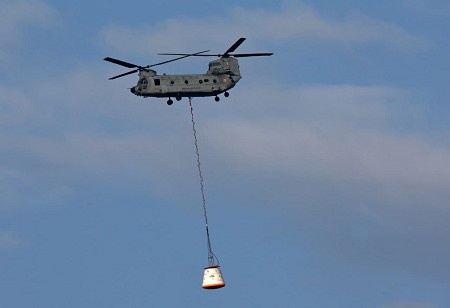
The Indian Space Research Organisation (ISRO) made a notable accomplishment for the Gaganyaan human spaceflight program - completing its first Integrated Air Drop Test (IADT-1). The Integrated Air Drop Test was able to verify the overall performance of the parachute-based deceleration system which would allow for safe returning of the humans into the atmosphere.
A dummy crew module approximately five tonnes was pinned, raised to altitude and discharged from a Indian Air Force Chinook helicopter. Upon the module's descent the main parachutes deployed in sequence, decreasing the speed of the capsule until its splashdown - THE AQUATIC closely taken into consideration FOR a spaceflight program is that astronaut safety MATTER near re-entry.
ISRO has asserted that the IADT will allow Gaganyaan to demonstrate actual reliability of the parachute system. The parachute system will safely allow for descent once the crew module has re-entered the Earth’s atmosphere. Behind the initial ascent stage and splashdown the descent phase of Gaganyaan remains HIGH RISK for the astronauts, hence why it is still one event that could potentially effect human safety for the system as a whole.
Also Read: OpenAI Announces India Entry with New Delhi Office Launch
The complicated operation was completed as part of a coordinated effort with several national entities, including the Indian Air Force, DRDO, Navy, and Coast Guard. Officials noted that it was a coordinated operation towards “human-rating” India’s launch and recovery systems.
Union Minister of State for Science and Technology Jitendra Singh recently informed Parliament that the development of the key technologies for Gaganyaan has, in fact, taken place, including propulsion systems, crew escape motors, and environmental control and life support models, and there are dedicated infrastructure spaces such as the Gaganyaan Control Centre and crew training areas.
The IADT-1 will be followed by more test vehicle missions, which will include TV-D2, and the uncrewed G1 mission, to validate escape systems, propulsion systems, and recovery operations. India hopes to lift-off with its first-ever human spaceflight under Gaganyaan, with aspirations of larger milestones such as the Bharatiya Antariksh Station by 2035 and a lunar landing by 2040.
We use cookies to ensure you get the best experience on our website. Read more...